A manual surface grinding machine is a precise tool used for finishing metallic surfaces, employing an abrasive rotating wheel to achieve high accuracy and smooth finishes.
1.1 Definition and Purpose
A manual surface grinding machine is a precision tool designed to finish metallic or non-metallic surfaces using an abrasive, rotating wheel. Its primary purpose is to achieve smooth, accurate finishes and tight tolerances. Commonly used in workshops and industries, it is ideal for small-scale operations requiring high precision and control over the grinding process.
1.2 Brief History and Evolution
The manual surface grinding machine evolved from early grinding techniques, with significant advancements in the mid-20th century. Initially using simple abrasive stones, modern machines now incorporate rotating wheels and precise control mechanisms. Technological improvements have enhanced accuracy, efficiency, and safety, making them indispensable in precision machining and metalworking industries for achieving high-quality finishes.

How Manual Surface Grinding Machines Work
Manual surface grinding machines smooth surfaces using an abrasive wheel. The operator controls the workpiece’s movement against the rotating wheel, held securely in a vice for precise grinding.
2.1 Key Components and Parts
A manual surface grinder features a spindle holding the rotating abrasive wheel, a motor for power, a worktable to support the material, and a vice to secure it. The magnetic chuck aids in holding ferrous materials, while coolant systems prevent overheating. Hand cranks enable precise control of the workpiece’s movement during grinding operations.
2.2 The Grinding Process Explained
The grinding process involves securing the workpiece on the magnetic chuck or vice. The operator manually moves the piece under the rotating grinding wheel, applying controlled pressure. The wheel’s abrasive particles remove material, creating a smooth finish. Proper coolant application prevents overheating, ensuring precision and extending tool life. This method requires skill to maintain accuracy and achieve desired surface quality.
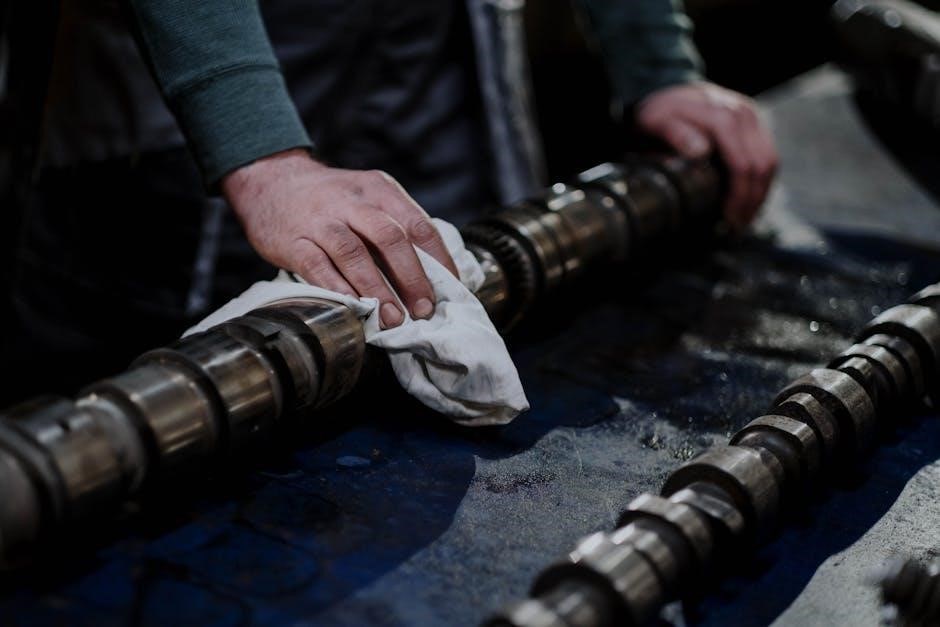
Types of Manual Surface Grinding Machines
Manual surface grinders include bench grinders, pedestal grinders, and specialized models, each designed for specific applications. Bench grinders are compact, while pedestal grinders are heavy-duty, offering versatility for various grinding tasks.
3.1 Bench Grinding Machines
Bench grinding machines are compact, versatile tools ideal for small-scale operations. They are commonly used for sharpening tools, deburring, and light grinding tasks. Portable and space-efficient, these grinders are popular in workshops and hobbyist settings, offering precise control for detailed work.
3;2 Pedestal Grinding Machines
Pedestal grinding machines are robust, floor-mounted units designed for heavy-duty applications. Often used in industrial settings, these grinders feature large grinding wheels and strong bases for stability. They are ideal for consistent, high-volume grinding tasks, offering durability and reliability in demanding environments.
3.4 Specialized Manual Grinders
Specialized manual grinders are tailored for unique applications, such as grinding non-ferrous metals or intricate surfaces. These grinders often feature advanced cooling systems and customizable abrasive wheels to optimize performance for specific materials. They are essential for precision work in industries like aerospace and electronics, where specialized finishes and tight tolerances are required.
Advantages and Disadvantages
Manual surface grinders offer precision and cost-effectiveness for small-scale tasks but can be time-consuming and less efficient for large-scale operations compared to automatic grinders.
4.1 Benefits of Manual Operation
Manual surface grinding machines provide precise control, ideal for intricate tasks and small-scale projects. They are cost-effective, requiring minimal initial investment and maintenance. Operators can achieve high accuracy and flexibility, making them suitable for customized work. Additionally, manual grinders are compact, saving workshop space and allowing for easy transportation. They are excellent for hobbyists and small businesses.
4.2 Limitations Compared to Automatic Machines
Manual surface grinders lack the speed and efficiency of automatic machines, making them less suitable for large-scale production. They require constant operator involvement, increasing labor costs and time. Manual grinders are also limited in capacity, handling smaller workpieces and requiring frequent setup changes. This makes them less efficient for high-volume tasks compared to automated alternatives.
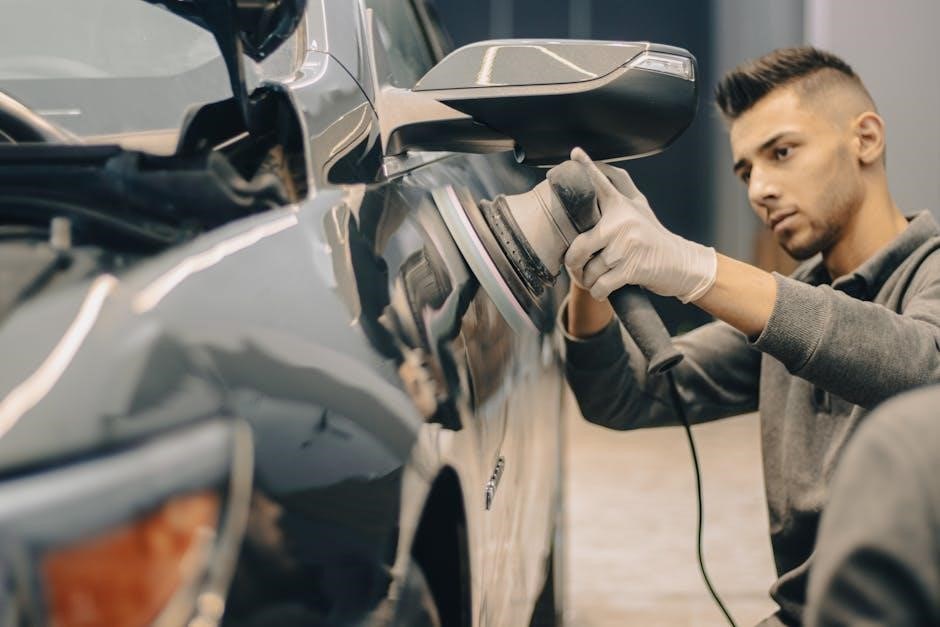
Choosing the Right Manual Surface Grinder
Selecting the right manual surface grinder involves considering factors like machine capacity, workload, and required precision to ensure it meets specific project demands and skill levels effectively.
5.1 Factors to Consider in Selection
When selecting a manual surface grinder, consider factors like machine size, grinding wheel compatibility, power source, and precision requirements. Ensure the grinder’s capacity matches the workload and material types. Additionally, evaluate the machine’s rigidity, stability, and ease of operation to meet specific project demands and operator skill levels effectively.
5.2 Supplier and Brand Considerations
Choosing a reputable supplier and brand is crucial for a reliable manual surface grinder. Look for brands with a history of producing durable and precise machines. Consider customer reviews, after-sales support, and warranty options. Ensure the supplier offers spare parts and technical assistance to maintain the grinder’s performance and extend its operational life effectively.

Safety Precautions and Best Practices
Always wear protective gear, ensure proper ventilation, and follow safe operating practices. Regular maintenance and inspection are crucial for preventing accidents and ensuring optimal performance.
6.1 Essential Safety Measures
Always wear safety goggles, gloves, and a dust mask. Ensure the grinding wheel is properly secured and suited for the material. Avoid loose clothing and tie back long hair. Keep the work area clean and well-ventilated. Use a coolant to prevent overheating. Never operate the machine without proper training. Ensure the grinder is stable and secure before use. Allow the wheel to reach full speed before grinding to avoid accidents.
6.2 Common Hazards and Prevention
Common hazards include wheel breakage, entanglement with loose clothing, and flying debris. Prevent accidents by regularly inspecting grinding wheels, ensuring they are free from cracks. Keep clothing tied back and avoid jewelry. Use guards to contain debris and ensure proper ventilation to reduce dust exposure. Always follow manufacturer guidelines for wheel speed and material compatibility to minimize risks.
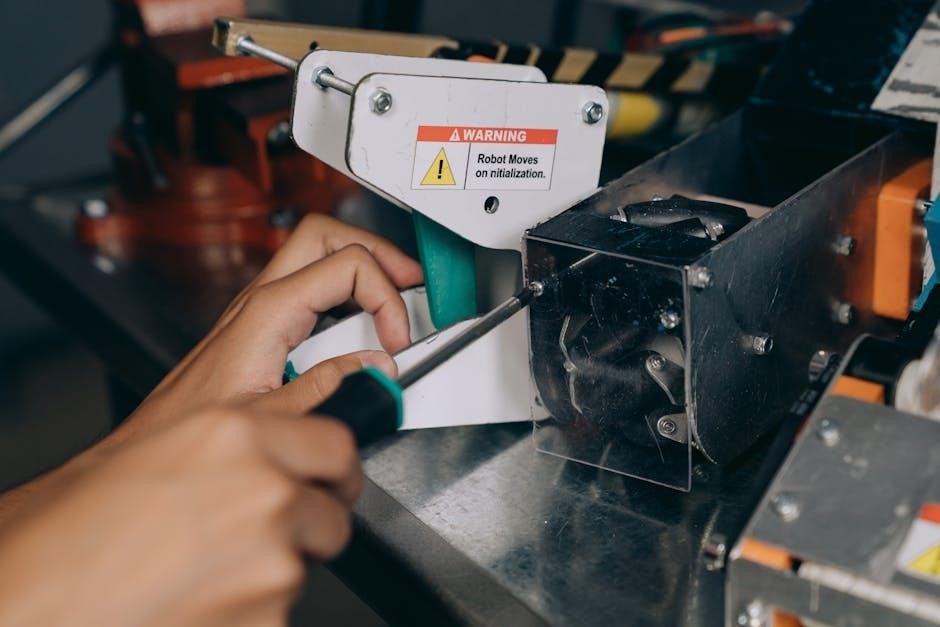
Maintenance and Troubleshooting
Regular lubrication of moving parts and spindle alignment checks are crucial. Address common issues like wheel imbalance promptly to ensure optimal performance and prevent operational hazards.
7.1 Regular Maintenance Routine
A regular maintenance routine for manual surface grinding machines involves checking and balancing the grinding wheel, cleaning the machine, and lubricating moving parts. Ensure the spindle is aligned and the table is free from debris. Regularly inspect and replace worn components to maintain precision and functionality. Always follow the manufacturer’s guidelines for optimal performance and longevity of the equipment.
7.2 Common Issues and Solutions
Common issues with manual surface grinding machines include wheel imbalance, which requires re-balancing, and misalignment of the spindle or table. Vibrations can be reduced by tightening components or replacing worn parts. Poor surface finishes may result from incorrect feed rates or dull grinding wheels, which should be addressed by adjusting settings or replacing the wheel. Regular maintenance helps prevent these issues.
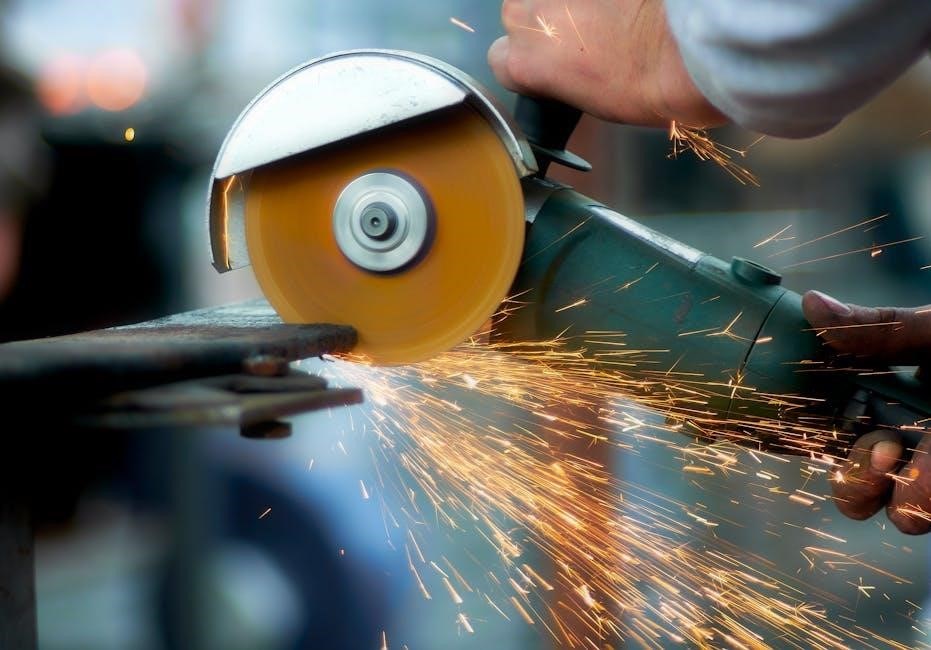
Applications of Manual Surface Grinding
Manual surface grinding machines are widely used in automotive, aerospace, and toolmaking industries for finishing metallic and non-metallic materials, ensuring precise surface finishes and dimensional accuracy.
8.1 Industries That Use Manual Grinders
Manual surface grinders are essential in automotive, aerospace, and precision machining industries for achieving precise finishes. They are also used in toolmaking, die-making, and metal fabrication for refining surfaces. Additionally, small-scale manufacturing and hobbyist workshops rely on these machines for their versatility and ability to handle intricate, small-scale grinding tasks efficiently.
8.2 Typical Materials and Projects
Manual surface grinders are commonly used on ferrous and non-ferrous metals, such as steel, aluminum, and titanium. Projects include finishing engine components, precision tooling, and creating flat surfaces for machinery parts. They are ideal for small-scale, high-precision tasks like sharpening cutting tools, grinding intricate dies, and polishing metallic components to achieve smooth, accurate finishes.

Comparison with Automatic Surface Grinders
Manual grinders are ideal for small, precise tasks, offering control and cost-effectiveness, while automatic grinders excel in large-scale production, providing speed and efficiency for bulk processing.
9.1 Key Differences
The primary distinction lies in operation: manual grinders require operator involvement for feed control, while automatic grinders use programmed cycles for unattended operation. Manual machines are compact, cost-effective, and suitable for small batches, whereas automatic grinders are larger, faster, and designed for high-volume production, reducing labor but increasing initial investment and complexity.
9.2 When to Choose Manual Over Automatic
Manual surface grinders are ideal for small-scale projects, precise control needs, or when working with unique materials. They excel in low-volume, high-variety tasks where flexibility and operator skill are crucial. Automatic grinders are better suited for large-scale, repetitive operations requiring consistency and speed, making manual grinders the preferred choice for craftsmanship and detailed work. They ensure cost-efficiency in smaller production environments and offer portability for workshop versatility.
Future Trends and Innovations
Future trends include integrating smart technology, eco-friendly abrasives, and energy-efficient designs. Innovations focus on enhancing precision, reducing waste, and improving operator safety in manual grinding processes.
10.1 Technological Advancements
Technological advancements in manual surface grinding machines include improved ergonomic designs, digital readouts, and automated wheel dressing systems. These innovations aim to enhance precision, reduce operator fatigue, and improve efficiency. Additionally, the integration of sustainable materials and energy-efficient motors is expected to minimize environmental impact while maintaining high performance;
10.2 Sustainability in Manual Grinding
The shift toward sustainability in manual grinding involves eco-friendly practices like reducing energy consumption and minimizing waste. Machines now incorporate energy-efficient motors and recyclable materials. Additionally, advancements in coolant systems and dust collection help conserve resources and lower environmental impact, promoting greener manufacturing processes while maintaining productivity.
Environmental Impact
Manual surface grinding machines generate metal dust and require coolants, impacting the environment. Proper waste management and eco-friendly practices are essential to minimize ecological footprints.
11;1 Eco-Friendly Practices
Eco-friendly practices for manual surface grinding include using biodegradable coolants, recycling metal particles, and reducing energy consumption. Proper disposal of grinding waste and using abrasive wheels with minimal environmental impact are also crucial. Implementing these practices helps minimize the ecological footprint of grinding operations while maintaining productivity and surface quality. Sustainability is key in modern machining processes;
11.2 Waste Management in Grinding
Effective waste management in manual surface grinding involves proper disposal of metal particles and coolant fluids. Using filtration systems to separate solids from liquids helps recycle coolants. Grinding waste should be stored in sealed containers to prevent environmental contamination. Adhering to local regulations ensures responsible disposal, minimizing ecological impact while maintaining operational efficiency and safety standards in the workshop environment.
Cost Considerations
Manual surface grinding machines offer a cost-effective solution for small-scale operations, with lower initial investment compared to automatic grinders. Operating costs include abrasive wheels and periodic maintenance, ensuring long-term efficiency and sustainability.
12.1 Initial Investment and Operating Costs
The initial investment for a manual surface grinder is generally lower than for automatic machines, making it accessible for small workshops. Operating costs include replacement of abrasive wheels, occasional maintenance, and energy consumption. While the upfront cost is modest, consistent use can lead to long-term savings, especially for projects requiring precision and minimal material removal.
12.2 Long-Term Cost Efficiency
Manual surface grinding machines offer long-term cost efficiency due to their durability and minimal maintenance needs. Their robust design ensures extended lifespan, reducing replacement costs. Additionally, the simplicity of manual operation lowers energy consumption and avoids expenses associated with advanced automation, making them a cost-effective choice for sustained use in various industrial and workshop settings.

Training and Skill Development
Proper training is essential for mastering manual surface grinding, ensuring operator safety and precision. Skill development includes understanding machine setup, wheel selection, and material handling techniques.
13.1 Importance of Operator Training
Proper training ensures operators understand machine setup, safety protocols, and grinding techniques, minimizing accidents and improving efficiency. It also enhances the quality of finished products.
Well-trained operators can identify potential issues early, reducing downtime and extending machine lifespan. Training fosters consistency in surface finishing, critical for precision industries.
13.2 Resources for Learning
Various resources are available to learn manual surface grinding, including online tutorials, manufacturer manuals, and community forums. Workshops and hands-on training programs offer practical experience. Official guides and instructional videos provide step-by-step instructions. Engaging with experienced operators and joining machining communities can also enhance skills and knowledge.
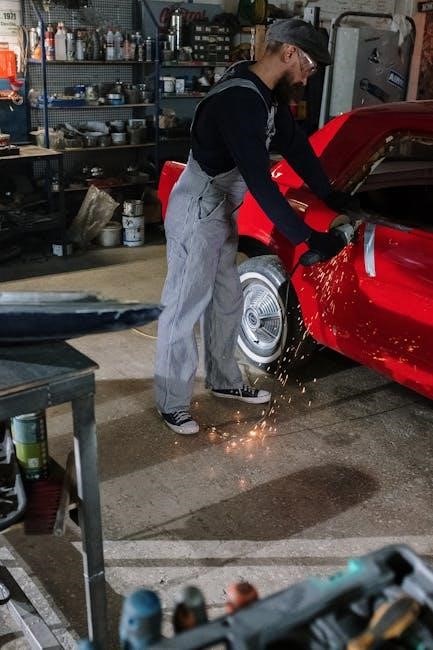
Case Studies and Success Stories
A manufacturing firm achieved enhanced precision in toolmaking by integrating manual surface grinders, ensuring consistent quality and reducing production time significantly.
14.1 Examples of Effective Use
Manual surface grinders have been effectively used in precision machining for creating angle plates with tight tolerances. A small workshop utilized one to refine custom tooling parts, achieving superior surface finishes. Additionally, a hobbyist employed a manual grinder to restore vintage machinery components, demonstrating its versatility in both industrial and DIY settings for precise metal finishing tasks.
14.2 Lessons Learned from Industries
Industries highlight that manual grinders are ideal for small batches and high-precision work. Proper operator training is crucial to maintain accuracy. Regular machine maintenance, such as wheel dressing, ensures optimal performance. Additionally, integrating manual grinders with CNC machines for hybrid workflows has shown to enhance production efficiency in precision machining and tool-making sectors, balancing flexibility with productivity effectively.
Manual surface grinding machines remain essential for precision machining, offering versatility and accuracy. Their enduring relevance lies in their adaptability to modern manufacturing needs and technological advancements.
15.1 Summary of Key Points
Manual surface grinding machines are versatile tools offering precision and accuracy for finishing surfaces. They are cost-effective, ideal for small-scale projects, and require skilled operators. Despite advancements in automation, these machines remain relevant due to their adaptability and ability to handle intricate tasks efficiently, making them indispensable in various industries and workshops.
15.2 Future Outlook
Manual surface grinding machines will continue to evolve with technological advancements, integrating eco-friendly practices and improved ergonomics. Despite automation’s rise, their versatility and cost-effectiveness ensure sustained relevance in precision machining. Future innovations may include hybrid models blending manual control with automated features, catering to diverse industrial needs while maintaining the craftsmanship synonymous with these machines.